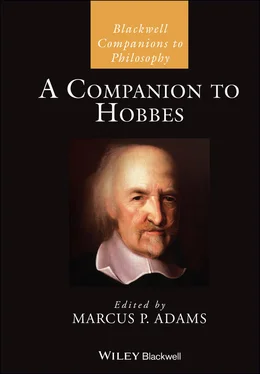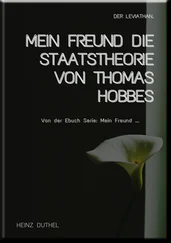1.3 Analyses and Syntheses Reinterpreted in Context
The bifurcation of philosophical method into a universal ordering of subject matter and a particular method of demonstration was commonplace in the logic textbooks of Hobbes’s intellectual context (Hattab 2014). Hobbes makes a similar distinction: “Philosophers either seek scientific knowledge [ Scientia ] simpliciter or indefinitely, that is, having posed no certain question, they [seek to] scientifically know as much as they can …” (Hobbes 1999, 59; OL I.60) in which case they employ a method that is strictly resolutive and analytical to arrive at universal notions compoundable by synthesis into definitions; or they seek to scientifically know
the cause of some certain phenomena, or to at least discover something certain, such as whatever would be the cause of light , heat , heaviness , a proposed shape , and similar things; or in which subject a certain proposed accident would inhere, or for the purpose of a certain effect which is proposed to be generated from many accidents, which [ones] would conduce most powerfully towards it; or in which manner for the producing of a certain effect, the proposed particular causes ought to be conjoined. On account of this variety of things sought, sometimes the Analytic method, sometimes the Synthetic, and sometimes both is to be summoned.
(Hobbes 1999, 59; OL I.60–1)
Method aimed at unqualified knowledge uses resolution/analysis and composition/synthesis in the Scholastic sense to holistically know as much as possible about body. Here computation is conceptual ordering, which Scholastic contemporaries distinguish into “analysis” and “synthesis.” Hobbes next turns to the method for answering specific questions about the causes and inherence of particular accidents of body, which may be analytic, synthetic or both, depending on the inquiry. But here he uses the Scholastic terms pertaining to the ordering method for another set of operations, including syllogistic deductions. The second branch of his method gives Hobbes the flexibility to tailor the procedure for the shortest route between causes/explanations and effects/consequences to the context of inquiry. But Hobbes misleadingly uses “analysis” versus “synthesis” plus their derivatives to label procedures that take distinct forms in the particular method. I will thus refer to its operations as analysis2 and synthesis2. 20
At root, analysis and synthesis, the basic operations of philosophical reckoning, are for Hobbes akin to mathematical subtraction and addition, respectively. Recall that he separates scientific knowledge from experience. Experience consists in sensing or remembering that there is something but cannot yield a causal explanation of it. Hobbes’s example is that I see something approaching me and as it gets closer my senses detect a certain shape and motion. All I know by experiential cognition is that this thing exists; I don’t know what it is and what its causes are. For that I require computation, which begins with something like subtraction, the mental operation of resolution or analysis. As when we subtract one number from another, analysis in the universal method separates out distinct features from the individual nature that encompasses them to arrive at the simple components of things – the elements. This happens in stages. As a person approaches me, I first separate out body from my perception of the individual, then the property of being animated, and finally rational, in the order of most universal to least 21(EW I.4). For Hobbes these elements are not physical parts of a thing – resolution is not the mechanistic reduction of a watch or automaton into its component parts (EW I.67). Nor need the elements be linguistic entities, since we can ratiocinate without words (EW I.14). Analysis is a step by step conceptual separating out of general features, contained in an individual concept, from the concept as a whole (EW I.4–5). 22
Hobbes later gives two examples to illustrate the strictly analytical method that yields the universal notions we need to attain unqualified knowledge of things. Both begin with an idea, from experience, as when we see something approaching, but now resolved from less general to more:
1 My idea of this square is resolved or analyzed into “plain, terminated with a certain number of equal and straight lines and right angles.” I can then resolve or analyze these concepts further into the properties common to all material objects: “line,” “plane,” “angle,” “straightness.”
2 My conception of gold is resolved into ideas of “solid,” “visible,” “heavy,” I can then further resolve or analyze these ideas into successively more general ones, like “extension” and “corporeity” until I arrive at the most general one: motion.
Once you have analyzed down to the most general, also the simplest, conceptual elements of your ideas you will have the causes of individual concepts of a square and gold. Hobbes’s use of the term “cause” suggests that the resolution of gold is a mechanistic reduction into the physical parts of gold. For how can concepts cause our ideas? However, Hobbes uses “cause” in the Aristotelian sense of one or more explanatory factors, since he also claims that the causes of concrete names like “body” are abstract names like “extension.”
The explanatory factors attained by resolution are common accidents of natural and artificial bodies. Recall that such accidents are the object of scientific knowledge for Hobbes. He explains:
but we seek this itself, what is an accident ? in which we seek that which we understand and not that which we should seek. For who does not always and in the same manner understand him who says any thing is extended, or moved, or not moved? But most men will have it be said that an accident is something , namely some part of natural things, when, indeed, it is no part of them. To satisfy these men, as well as may be, they answer best that define an accident to be the manner by which any body is conceived; which is all one and the same as if they should say, an accident is that faculty of any body, by which it works in us a conception of itself .
(Hobbes 1999, 83; OL I.91)
An accident is not a real thing in the broad Scholastic sense of a res , which differs from substance in that it can only naturally exist by inhering in a substance. Rather accidents are the ways in which we conceive of bodies, as well as the faculties bodies possess to cause us to conceive of them in certain ways, e.g., our conception of a moving body plus the power of a body to cause us to sense motion. Basic accidents, like motion, need not be defined since everyone understands them. Hobbes refers to these self-evident ways of conceiving of bodies as “universals,” “universal notions,” and “simples,” despite denying that universals have any existence beyond the names we apply to groups of individuals. Through definitions we acquire “an universal notion of the thing defined, representing a certain universal picture thereof, not to the eye, but to the mind” 23(EW I.84). Definitions are thus key to the universal claims of science.
According to Hobbes, based on similarities among individual ideas, we signify common accidents with abstract names or universals, e.g., “extension” for similar sensations of bodies being extended, and “corporeity” for similar ideas of existing corporeal things. As long as we do not consider abstractions like extension and corporeity as existing apart from bodies, abstract names are used correctly and are the only means by which we can reason philosophically. Hence, just as we can analyze our concept of an individual square, piece of gold, and person into their conceptual parts, we can analyze the concrete name “body” into abstract names corresponding to the conceptual elements of the idea for which the name is a sign. For example, being extended is an accident we can subtract from our idea of an individual body. The corresponding abstract name “extension” is through resolution identified as a cause/explanation of the concrete name “body.” That does not mean abstract extension is thereby reified; it is not something over and above the idea of particular bodies being extended. Nor is extension the cause of the bodies themselves. The abstract name “extension” is an explanatory factor that is revealed when we resolve the idea signified by the concrete name “body.” Concrete names resolved into abstract names give us definitions. When a word stands for a compounded conception, like a person, a square or gold, rather than a simple conception, like motion,
Читать дальше












